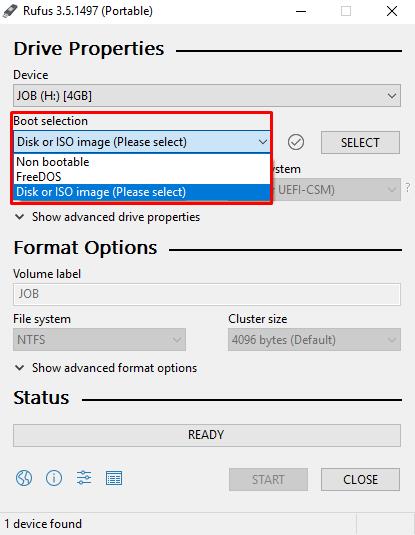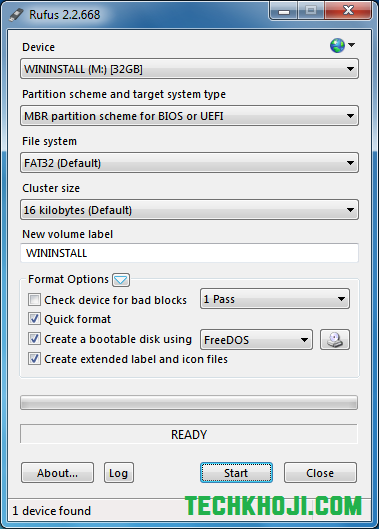

- #Create windows 10 bootable usb with rufus how to#
- #Create windows 10 bootable usb with rufus install#
- #Create windows 10 bootable usb with rufus drivers#
- #Create windows 10 bootable usb with rufus software#
Let’s see how to make a bootable Windows 10 DVD Drive from ISO file. When some unexpected system errors occur and the computer gets stuck in blue/black screen or won’t boot up, a bootable USB or CD drive would be a life saver. Microsoft has also accepted the flow and allowed users to create bootable USB from ISO on Windows 10. Select NTFS if the program errors as above.Nowadays, people are used to backing up digital information from computer to an USB drive for later use or free some memory space. Selecting MBR and FAT32 will support both UEFI and Legacy. In general, choose GPT if you only need UEFI support. This ISO image contains a file larger than 4GB, which is more than the maximum size allowed for a FAT or FAT32 file system. If you get this error message, it means that the ISO file contains a file larger than 4GB. In this case, choose NTFS instead of FAT32, Rufus will create a second FAT32 partition to support UEFI boot.

#Create windows 10 bootable usb with rufus install#
Or select Standard Windows Installation to create the installer to install to any other drive. Image Option: You can install Windows onto USB drive with Rufus’s Windows To Go option.Click the SELECT button and select the ISO file on your computer.Select the USB drive you want to create under Device.Īll data on this drive will be lost, including other partitions on the hard disk of this partition.Rufus also supports creating two NTFS partitions to store files larger than 4GB and FAT32 to boot UEFI. If the ISO file contains files larger than 4GB, choose NTFS.īy default, Rufus will not support booting in both UEFI and Legacy (BIOS). Rufus 3.0 has improved on the interface.Ĭhoose the right options according to your needs:
#Create windows 10 bootable usb with rufus software#
First, download the latest version of Rufus here and then run the software to get started. Rufus is lightweight and easy to use. Here are the detailed steps on how to use Rufus to install Windows 10 for beginners.
#Create windows 10 bootable usb with rufus drivers#

This tool does not support hard drive (HDD) and external hard drive. If you want to create a bootable hard drive or an external hard drive, Rufus is not the choice. Only supports USB (not tested with SDcards).Rufus offers many great features but it also has limitations. Rufus is a simple and easy to use tool, just download and run the tool to create bootable USB. You can easily use Rufus to create Windows 10 bootable USB and many other operating systems including Windows XP, Windows 7, 8, 8.1, Ubuntu and many other Linux distributions. This tool has a long history of development (from 2011), Rufus 3.4 is currently the latest version updated in 2018. Personally I like this tool because it’s lightweight, simple and easy to use. This article will guide you how to use Rufus to install Windows 10 that supports both UEFI and Legacy. Rufus is one of the best USB bootable software.


 0 kommentar(er)
0 kommentar(er)
